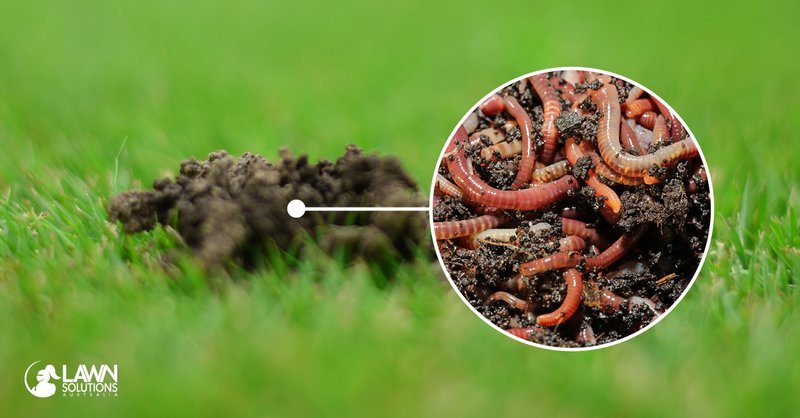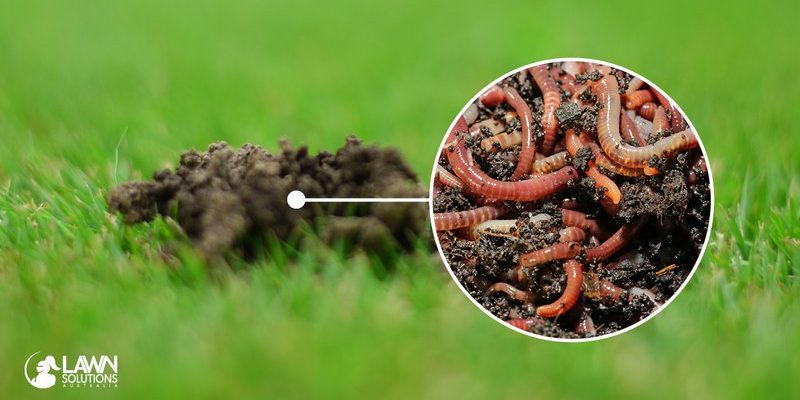
Now, you might be wondering about the kinds of earthworms out there and how they really help. Are they all beneficial, or do some cause more trouble than they’re worth? In this article, we’re going to dig deep (pun intended!) into the benefits of earthworms in lawn care while also busting some common myths. So grab a cup of coffee, sit back, and let’s get into the nitty-gritty of how these little guys can transform your yard!
Why Earthworms Are Essential for Your Lawn
Let’s start with the basics: why should you care about earthworms in the first place? Earthworms act like nature’s tillers, and their impact on soil health is profound. First off, they help **aerate the soil**. As they move through the ground, they create tiny tunnels, allowing air and water to reach plant roots more easily. Imagine your lawn being able to breathe a little better—sounds good, right?
Moreover, earthworms contribute to **nutrient cycling**. They munch on dead leaves, grass clippings, and other organic debris, breaking it down into rich compost. This process enriches the soil with essential nutrients, making it easier for your grass and plants to thrive. So, when you see that lush green lawn, there’s a good chance that earthworms played a role in its beauty!
Finally, let’s not forget about **moisture retention**. By improving soil structure, earthworms help retain water more efficiently. This means less time worrying about whether your lawn needs watering and more time enjoying your outdoor space. Plus, with less water dependency, you’re also helping the environment—win-win!
Common Myths About Earthworms
Now that we’ve established how great earthworms can be, let’s clear up a few myths. One common idea is that earthworms are **bad for all types of soil**. While it’s true that some earthworms prefer certain environments, most species, like the common red wigglers, are beneficial for a wide variety of lawns. They’re quite versatile and adapt to different conditions!
Another myth is that earthworms can lead to **overpopulation**, which means too many worms could harm your lawn. In reality, earthworm populations tend to balance themselves out based on food availability and soil conditions. So unless you’re creating an artificial environment ideal for them, there’s no need to worry about an earthworm takeover.
Some folks also think that **earthworms only matter in a garden**. That’s simply not true! Their benefits extend to lawns as well. Whether you’re growing a vegetable garden or just maintaining a grassy yard, earthworms contribute to a healthier ecosystem overall.
The Different Types of Earthworms
You might be surprised to learn that not all earthworms are created equal. There are three main types: **anecic**, **endogeic**, and **epigeic** earthworms. Each serves a different purpose in the ecosystem, so it’s helpful to understand them.
– **Anecic Earthworms**: These are the big guys that dig deep burrows. They bring organic matter from the surface down into the soil, which is great for nutrient mixing. Think of them as the deep-sea divers of the earthworm world—great at getting to the bottom of things!
– **Endogeic Earthworms**: These worms create horizontal burrows just below the surface. They help aerate the soil while keeping it rich with nutrients. Like a good friend who knows all the neighborhood gossip, they stay close to home but still help keep the environment lively.
– **Epigeic Earthworms**: These little helpers live right at the surface and munch on organic litter, like fallen leaves. They’re the recyclers of the worm world, making sure nothing goes to waste.
Understanding these types can help you appreciate the diverse roles they play in your lawn’s health.
How to Attract Earthworms to Your Lawn
If you’re convinced of the benefits of earthworms, you might be wondering how to attract them. Fortunately, it’s easier than you think! Here are a few simple strategies to get those earthworms wiggling:
1. **Add Organic Matter**: Earthworms love decaying leaves, grass clippings, and kitchen scraps. By creating a compost pile or simply leaving organic debris on your lawn, you’ll give earthworms ample food to thrive.
2. **Avoid Chemical Pesticides**: Many pesticides can harm earthworm populations. Instead, look for organic pest control options that won’t disrupt their habitat. Remember, the healthier your soil, the less you’ll need those chemicals!
3. **Moisture is Key**: Earthworms need moisture to survive, so make sure your lawn is neither too dry nor overwatered. Aim for consistent watering during dry spells, which will keep the soil cozy for your new wriggly friends.
4. **Mulch**: Applying a layer of mulch not only helps retain moisture but also provides an excellent habitat for earthworms. It’s like rolling out the red carpet for them!
By implementing these tips, you can create a welcoming environment that encourages earthworm populations to flourish.
How Earthworms Support Lawn Health
The benefits of earthworms don’t just stop at aeration and nutrient cycling; they offer a whole suite of advantages for your lawn’s overall health. For starters, earthworm activity promotes **biodiversity** in the soil. A diverse range of microorganisms flourishes alongside earthworms, creating a more vibrant and resilient ecosystem that can fend off diseases.
Their burrowing also helps mitigate **soil compaction**, which is a common issue for many lawns. Compacted soil can restrict root growth and water absorption, leading to a struggling lawn. With earthworms doing their thing, your soil will remain fluffy and full of life.
Lastly, let’s talk about **pH balance**. Earthworms help to regulate soil acidity levels as they break down organic material. This is crucial because many plants prefer a specific pH range to grow optimally. With earthworms in your lawn, you’ll likely see fewer fluctuations, giving your grass the best chance to thrive.
Final Thoughts on Earthworms in Lawn Care
Earthworms are like the unsung heroes of your lawn. They’re working tirelessly beneath the surface, ensuring that your grass stays green and vibrant. From aerating the soil to cycling nutrients and enhancing moisture retention, they play a critical role in maintaining a healthy lawn.
So, next time you step outside, take a moment to appreciate these little creatures. They might not get the same recognition as your fancy lawn mower, but they certainly deserve a spot in your lawn care strategy! Remember to nurture your soil with organic matter, ditch harmful pesticides, and keep your yard a welcoming environment for earthworms. With a little intention, you can create a lush, thriving lawn that both you and your underground friends will enjoy. Happy gardening!

